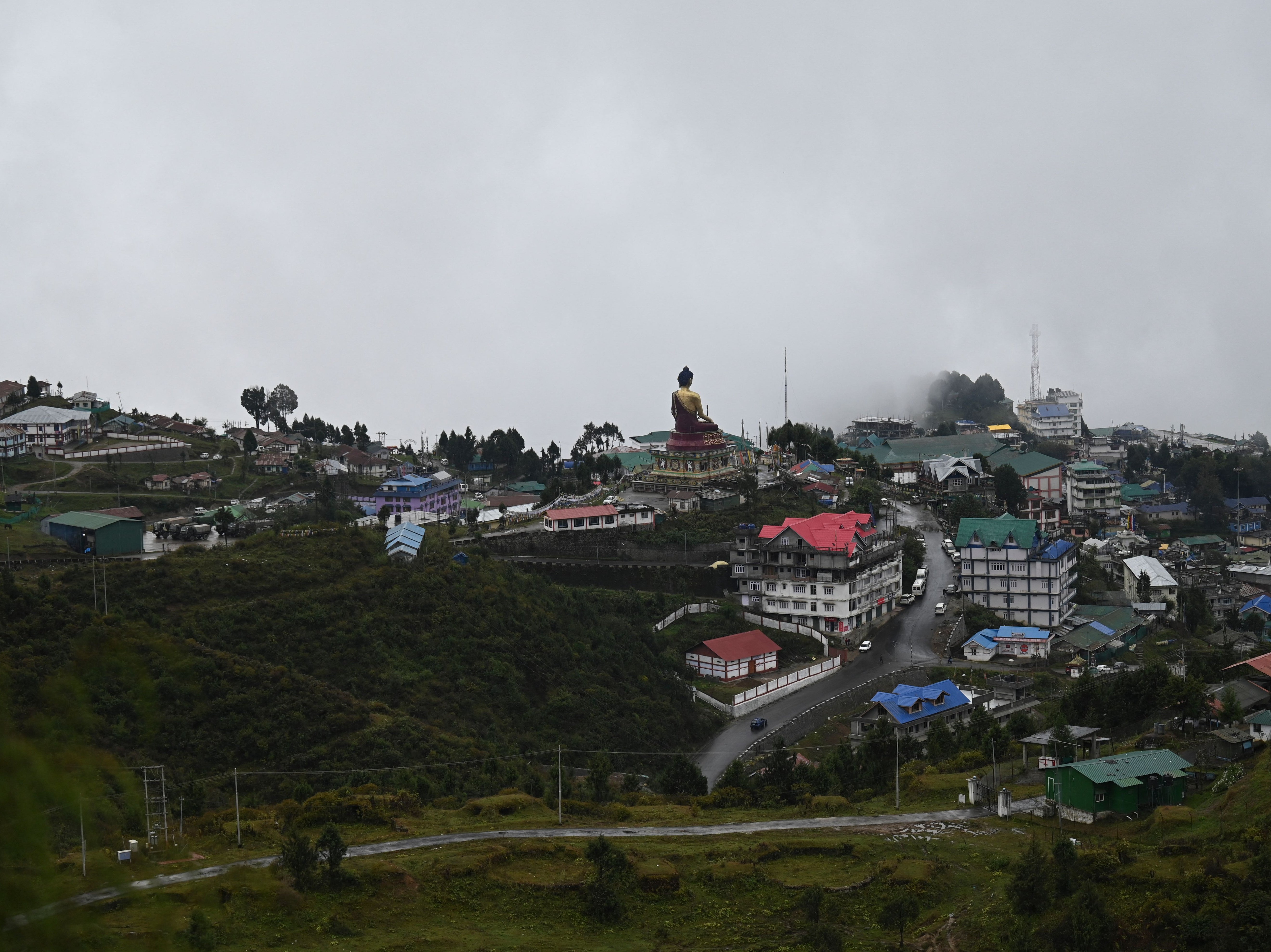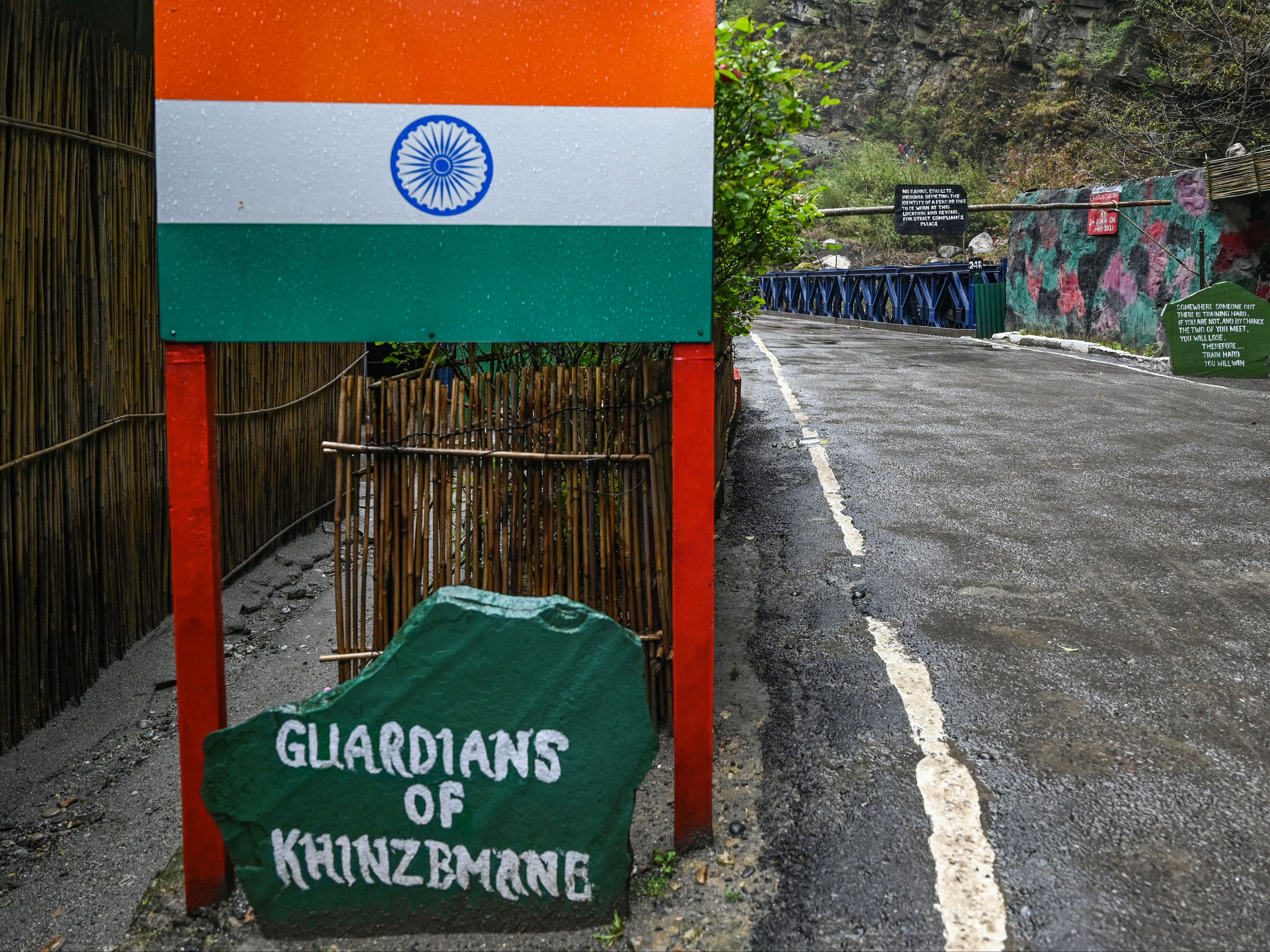Where is Arunachal Pradesh? The region at centre of row between India, China – and now US
Stretching across the Himalayas, the 3000km Sino-Indian frontier is the ‘longest disputed border in the world’ with both India and China laying claims on Arunachal Pradesh
Your support helps us to tell the story
From reproductive rights to climate change to Big Tech, The Independent is on the ground when the story is developing. Whether it's investigating the financials of Elon Musk's pro-Trump PAC or producing our latest documentary, 'The A Word', which shines a light on the American women fighting for reproductive rights, we know how important it is to parse out the facts from the messaging.
At such a critical moment in US history, we need reporters on the ground. Your donation allows us to keep sending journalists to speak to both sides of the story.
The Independent is trusted by Americans across the entire political spectrum. And unlike many other quality news outlets, we choose not to lock Americans out of our reporting and analysis with paywalls. We believe quality journalism should be available to everyone, paid for by those who can afford it.
Your support makes all the difference.The US has said it recognizes Arunachal Pradesh as part of India and “strongly opposes” any unilateral attempts to advance territorial claims in the northeastern Indian state that shares a poorly demarcated border with China.
For years India has maintained that the state is its “integral and inalienable part” despite China’s claims that Arunachal Pradesh belongs to southern Tibet.
The current flashpoint in border diplomacy comes in the wake of Indian prime minister Narendra Modi unveiling a tunnel in Arunachal Pradesh on 9 March at an elevation of 13,000ft (3962m). The Sela Tunnel is designed to offer year-round connectivity to the strategically important Tawang area in the state and is anticipated to facilitate troop mobility in the region.
The tunnel will also help India bolster its defence along the 3,500km unofficial border with China, known as the Line of Actual Control (LAC).
China’s Ministry of National Defense took exception to the inauguration of the tunnel and said India should “stop making any moves that complicate the border issue and earnestly maintain peace and stability in the border areas”.
Colonel Zhang Xiaogang, spokesperson for the Defence Ministry, added that the tunnel’s inauguration in Arunachal Pradesh – a state it locally calls Zangnan – “runs counter to the efforts made by both sides to ease the border situation”.
India has been quick to counter China. “Repeating baseless arguments in this regard does not lend such claims any validity,” India’s Foreign Ministry spokesperson Randhir Jaiswal said.
On Wednesday, US State Department’s principal deputy spokesperson Vedant Patel told the media: “We strongly oppose any unilateral attempts to advance territorial claims by incursions or encroachments, military or civilian, across the Line of Actual Control.”
As tensions escalated, China strongly opposed the US stand on the disputed region. “Delimitation of the China-India boundary has never been completed,” Foreign Ministry spokesperson Lin Jian told reporters.
The two nuclear-armed neighbours have about 3,000km (approximately 1,860mile) border between them, which is largely ill-defined. According to the Crisis Group, stretching across the Himalayas, the Sino-Indian frontier is the “longest disputed border in the world”.
Both countries have been entangled in a longstanding boundary dispute, which escalated into a war in 1962 that India lost. In the confrontations that erupted along their shared border in the western Himalayas in 2020 – the first in decades — at least 20 Indian soldiers and four Chinese soldiers lost their lives.
Another confrontation in January 2021 resulted in injuries to soldiers on both sides. This incident occurred near the state of Sikkim in India, situated between Bhutan and Nepal.
In fact, India and China do not even agree on the length of the Line of Actual Control (LAC): India claims it to be 3,488km long, while China says it is only 2,000km, the Crisis Group noted.
Recently, China’s publication of new maps claiming territories like Arunachal Pradesh and the Aksai Chin plateau, which India asserts as its own, has reignited border tensions. India has formally protested these claims, with Indian external affairs minister S Jaishankar dismissing the significance of such unilateral territorial assertions by China.
The border dispute, which dates back to the colonial era, is not just a bilateral issue but has broader implications for regional stability, international relations, and global power dynamics, observers note.

The Line of Actual Control between India and China is divided into three sectors: the western, middle, and eastern sectors, with significant disagreements on its exact location, particularly at the extremes.
In the western sector, China occupies Aksai Chin (38,000 sq km), claimed by India as part of Ladakh. The eastern sector extends from the India-Bhutan-China to the India-China-Myanmar junctions, covering Arunachal Pradesh and Sikkim. Here, India relies on the McMahon Line from the 1914 Tibet-British India Simla Convention, which China disputes, not recognising it due to Tibet’s purported lack of sovereignty at the time.
While Beijing informally respects the McMahon Line as the LAC, it claims about 90,000 sq km in Arunachal Pradesh as Tibetan territory. The middle sector, less disputed, lies opposite Tibet, with Himachal Pradesh and Uttarakhand on the Indian side.

In December 2022, the Indian and Chinese armed forces engaged in a confrontation at Yangtse along the Line of Actual Control in the Tawang Sector of Arunachal Pradesh. In an attempt to solidify its claims in the region, China has embarked on innovative strategies, including the construction of “xiaokang” or model villages in key locations, the renaming of places, and issuing new border laws that India sees as giving more legal cover to its forces, according to a Hindu newspaper report.
The Modi administration has also taken steps to fortify India’s stance along its borders, intensifying the development of infrastructure such as roads, bridges, tunnels, and airfields. “India has done more in the past ten years to strengthen and build border infrastructure and military preparedness, and to create offsetting and asymmetric capabilities, than in any decade since independence”, Shivshankar Menon, a former Indian national security adviser, wrote in 2016.
In fact, last year, the US Senate introduced a bipartisan resolution reaffirming the state of Arunachal Pradesh as Indian territory while positing that China’s claim over Arunachal Pradesh is part of its “increasingly aggressive and expansionist policies”.

Amrita Jash, assistant professor at the Department of Geopolitics and International Relations, Manipal Academy of Higher Education, wrote in Scroll last year: “Having replaced peaceful co-existence with armed co-existence, the increased volatility at the India-China border is making it even harder to foresee a permanent solution to the territorial dispute in the immediate future.”
She added: “Given the uncertainties and the prevailing conditions along the India-China boundary, the possibility of yet another flare-up remains very real. Any such situation will be detrimental to the security and stability of the Indo-Pacific region and have implications for every other stakeholder, beyond just India and China.”
Join our commenting forum
Join thought-provoking conversations, follow other Independent readers and see their replies
Comments